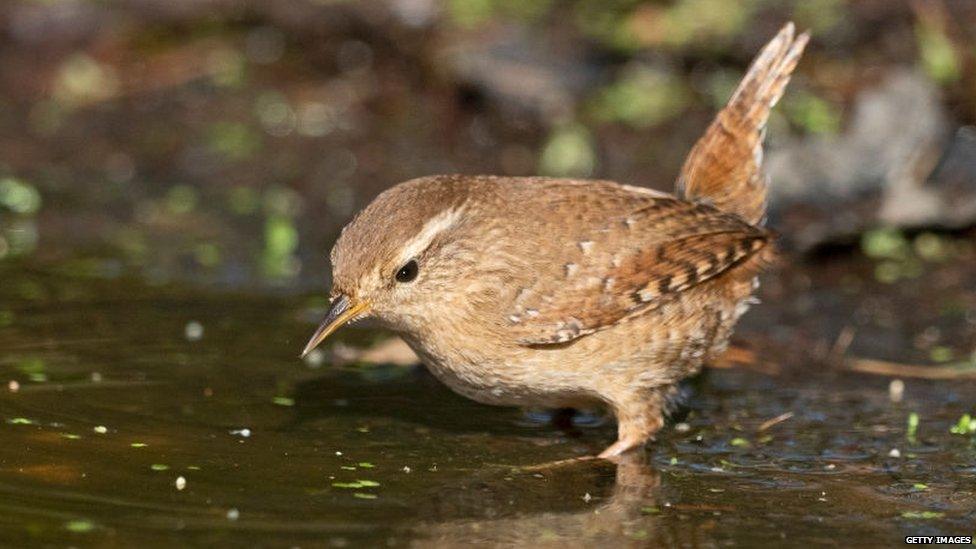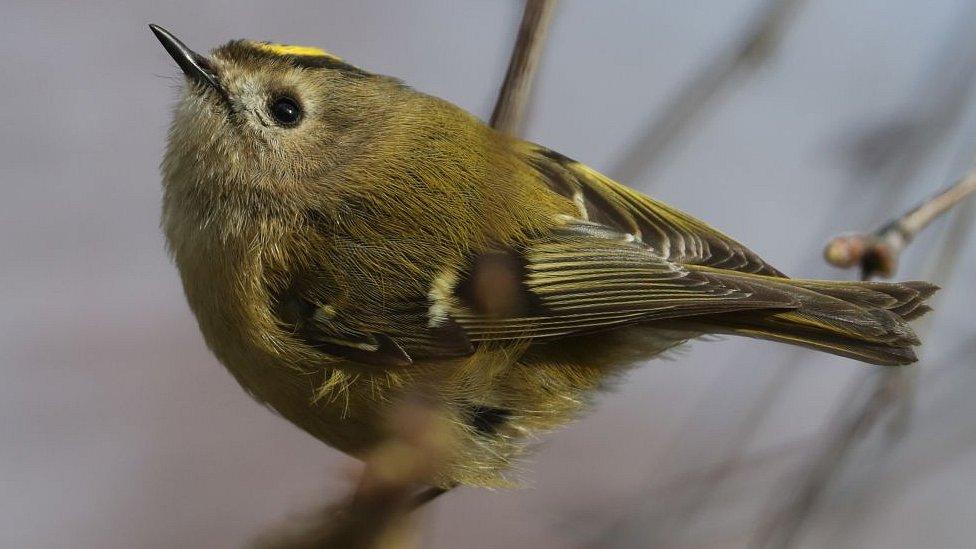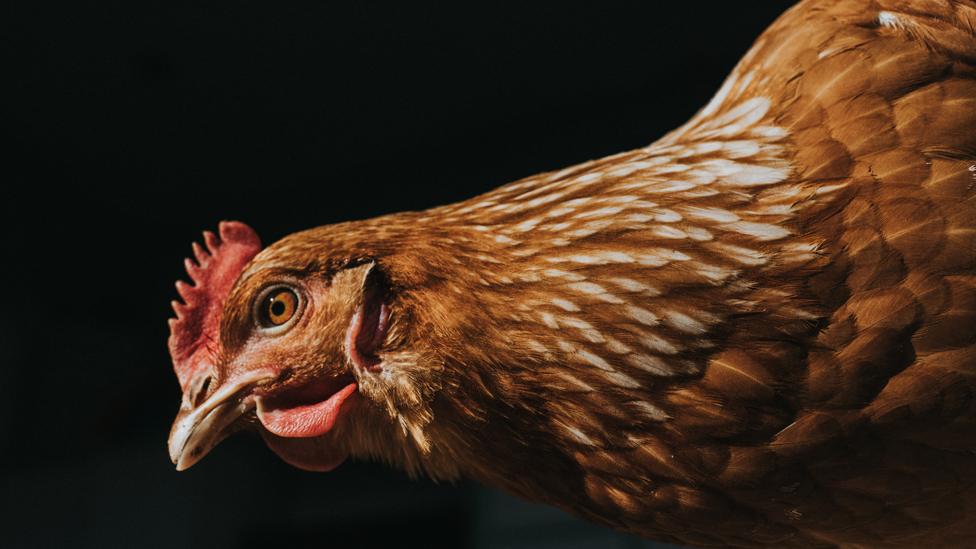Scotland's woodland bird numbers recover after Beast from the East
- Published

Wrens were among the birds most affected by the harsh winter weather in early 2018
Scotland's woodland birds have recovered from a short-term decline linked to the 'Beast from the East'.
Numbers of wrens and goldcrests, two species most affected by harsh winter weather, rose by more than 20% in 2019 after a 12% fall between 2017 and 2018.
The longer-term trend for woodland birds is also positive, showing an increase of 59% between 1994 and 2019.
Farmland birds have increased by 14% over the same period, but some upland birds have declined by more than 45%.
The numbers of dotterel, curlew, black grouse, hooded crow and dipper have all fallen dramatically over the 25-year period.
The latest official statistics published by NatureScot, external track the abundance of Scotland's terrestrial breeding birds.
As well as a a rapid recovery for wrens and goldcrests, other woodland species to show big increases include chiffchaff, great spotted woodpecker and blackcap.

The goldcrest is Britain's smallest bird, weighing as little as 5g
Simon Foster, who analyses trends for NatureScot, said: "Bird populations typically fluctuate year-on-year but it's encouraging to see that the recent dip in the fortunes of our woodland birds due to the harsh winter of 2017/18 appears to have been reversed in these latest figures.
"Climate change is also having an effect with evidence of some species, such as the willow warbler, shifting northwards and increases in Scotland accompanied by declines further south.
"The picture is mixed however, with some woodland species such as the treecreeper continuing to decline.
"Winter can be a tough time for birds and people can do their bit to help wildlife during the colder months by putting out extra food and providing shelter in their gardens."
Farmland birds such as goldfinch and great tits have seen the greatest long-term increases, but there have been declines in the numbers of greenfinch, kestrel and lapwing.

Lapwings, also known as peewits because of their distinctive call, have declined in numbers
The long-term decrease in upland bird populations has been driven by factors including climate change, forest expansion and changes in management practices such as grazing and predator control, although the short-term change from 2018 to 2019 was stable.
Work has begun to restore habitat such as damaged peatland, external for struggling upland species, along with projects such as the large-scale Cairngorms Connect, external partnership and Working for Waders, external.
Dr Ben Darvill, development manager for the British Trust for Ornithology, said the collective efforts of volunteers allowed long-term population trends for 66 widespread breeding bird species in Scotland to be monitored.
"By combining these trends we can provide an indication of how birds are faring in different habitats," he added. "These indicators help to inform conservation policy and provide a measure of progress."
- Published18 December 2020

- Published5 December 2020

- Published18 November 2014
